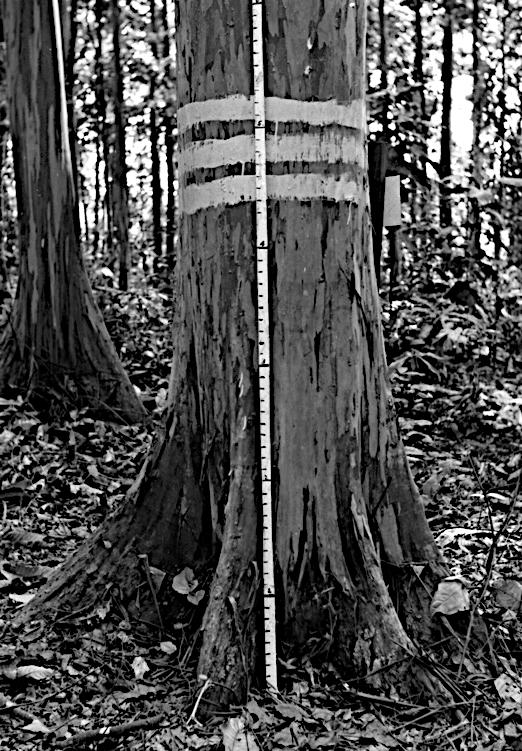
1 minute read
Selection of propagation population trees
from PNGAF MAG ISSUE # 9B - 5B4D3 Dr John Davidson Accompaniment "RAINBOW EUCALYPT MAN" Part 3 of 8 parts
by rbmccarthy
PCA and FA analyses on the 150 breeding population trees confirmed the results obtained in the original test sample of nine trees; that is that it was possible to select separately for wood density without affecting the production variables.39
Selection of propagation population trees
Advertisement
Thirty-two trees having a whole tree wood density range of 0.36 – 0.40 gms/cc were selected from the breeding population as “plus trees” destined for the propagation population sub line (in this case a grafted clonal seed orchard and/or a half-sib seedling seed orchard). This selection would fulfil the two most desirable attributes of wood density for pulp production from E. deglupta: i) increased uniformity in density among trees, and ii) average wood density towards the higher end of the range found in this age group of this generally low-density species.
The 32 trees were identified in the field by adding a third yellow painted ring near breast height. Effort was intensified at Keravat to collect any seed produced by these trees to ensure their inclusion in the propagation population.
Left: “Plus tree” selected at Keravat in Fryar LA. Age 15 years. Diameter at breast height was 45.1 cm. Height 51 m. Whole tree wood density was 0.40 gms/cc (400 kg/m3). Whole tree wood volume was 3.6 m3 under bark. Whole tree wood weight (8% moisture content, under bark) was 1.44 tonnes, and this could produce potentially about 700 kg of air-dry chemical pulp. This tree also scored very high for straightness and bole cylindricity.
Right: Three yellow paint rings and a metal number plate on a creosoted picket identify this “plus tree” 49.4 cm diameter at breast height. Buttress was less than about 3 feet (about 1 m) in height (Scale is marked in feet (numbered marks) and inches, 1 foot = about 0.3 m.)
39 Pages 218 – 227 In Davidson J 1972 loc. cit.









